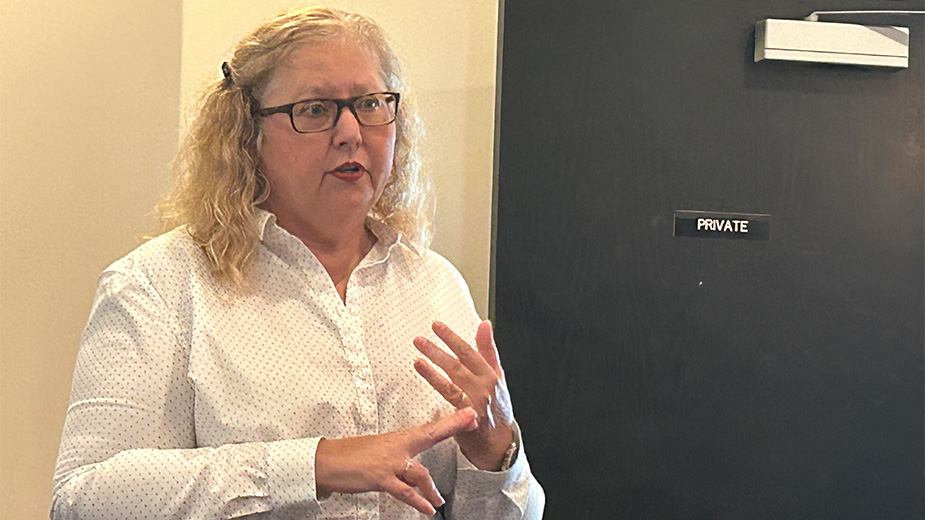Ohio Execs Slightly Less Optimistic about Economy
PITTSBURGH — Optimism about the national economy among small- and mid-sized business owners in Ohio remains at a record high. But optimism about the local economy and their own business has slipped slightly since the spring, finds PNC Bank’s semiannual survey of business owners and executives.
The historic optimism about company prospects, which PNC reported in the spring (52%) chilled slightly this fall (47%), but remains well above fall 2017 (40%). At the same time, nearly half (48%) describe their outlook for the national economy as optimistic, the highest ranking in the 10-year survey. One in three (34%) are optimistic regarding the local economy for the next six months, compared to 38% in the spring.
“Ohio’s economy continues to grow at a solid pace. The statewide unemployment rate ticked up slightly, but is still near its lowest since the Great Recession, and average hourly earnings growth is keeping pace with the US average rate of 2.5% to 3%,” reports Bill Adams, PNC economist. “Ohio continues to have a lower cost of living and a slower growth in home prices, but average prices of home sales across the state are above pre-downturn levels.”
Among the Ohio business leaders surveyed, 58% expect increased sales, dropping marginally from the record high in the spring (66%). Just over half (52%) expect increased profits, down slightly from the spring (58%).
At the same time, the number of Ohio business leaders forecasting rising prices in the next six months gained momentum. More than half (54%) anticipate suppliers charging more, a significant jump from the spring (38%). Of those, 36% plan to charge their customers more, similar to the spring (35%). Rising non-labor costs, increasing business and favorable market conditions are among the key drivers of higher prices, the survey said. Only 1% of businesses anticipate lowering prices.
Expectations for U.S. consumer prices and inflation jumped significantly with 84% of business leaders expecting higher consumer prices, up from 72% in the spring.
The percentage of Ohio business leaders expecting to increase wages is 38% compared to 40% in spring, while the percentage planning to decrease workers’ wages remains low at 5%. Among those business leaders planning to decrease or maintain wages, nearly three-fourths (74%) point to wages that are already competitive for their industry and see no issues with employee turnover.
One in four Ohio business leaders (24%) plan to add full-time employees in the next six months, a drop from the survey high of 32% in spring; just 3% expect to reduce full-time employees. Half cite business growth as the key driver of hiring. Three in 10 businesses looking to hire more workers report it is harder to find qualified candidates, citing lack of skills (24%) or lack of dependability or inability to pass screening requirements (27%). And 18% report not having enough applicants.
Seven in 10 Ohio business leaders expect no change in hiring full-time employees in the next six months, citing a lack of business growth, difficulty in finding workers with the right skills and using automation or outsourcing.
With the labor market continuing to tighten, over two-thirds (69%) of Ohio business leaders say they have taken one or more actions to retain existing or attract new employees. These include increasing wages/salaries (36%), offering or increasing bonuses (21%) and boosting benefits (18%). Over one in four (29%) have allowed more flexible work arrangements and 14% have relaxed hiring standards.
Nearly three in 10 (29%) Ohio business leaders report currently selling or buying items or services from other countries to some extent. However, only 3% characterize the volume of that trade as “large.” When asked to pick sides on increasing U.S. tariffs on other countries’ goods based upon what’s best for their own business, 32% are in support (35% in spring 2017) and 30% are opposed (33% in spring 2017); more than a third of business leaders (36%) are uncertain.
As a result, 37% anticipate paying higher prices to suppliers. Three out of 10 Ohio business leaders expect to increase prices they charge their customers should the U.S. impose increased tariffs on other countries’ goods, but half (51%) expect no impact. Half of Ohio business leaders (52%) do not expect any impact on company sales, with 18% anticipating increased sales. Only 5% forecast decreased sales as a result of increased U.S. tariffs on goods from other countries.
Familiarity with the impact of the federal Tax Cuts and Jobs Act of 2017 on business is 23% versus 27% in spring. The survey found 53% are familiar with the new tax law, but uncertain how it will affect their business, compared to 42% in the spring.
Significantly fewer Ohio business leaders (24%) view the potential impact to their bottom line as positive (36% in spring). Nearly half (48%) feel it is too early to tell or simply do not know, an increase from 35% in the spring.
Artemis Strategy Group conducted the telephone survey of 150 small and mid-sized Ohio businesses from July 9 through Sept. 13.
Copyright 2024 The Business Journal, Youngstown, Ohio.



